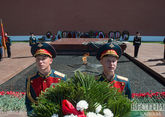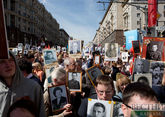August 23 marks the 80th anniversary of the signing of the Molotov-Ribbentrop Pact, the Treaty of Non-aggression between the Soviet Union and Nazi Germany. Why was the Soviet Union forced to sign a pact with Hitler Germany? What circumstances preceded this? Why was the USSR’s desire to create a coalition against the Third Reich unsuccessful? What were plans of the British, French, Polish leaderships in the late 1930s regarding the Soviet Union? Did they even want a coalition with the USSR against Nazism? Director of the Russian Military-Historical Society Mikhail Myagkov and head of the scientific sector of the Russian Military-Historical Society Yuri Nikiforov tried to answer these questions during the panel session.
According to Myagkov, the dynamite that blew up the international situation and brought Europe to the brink of collapse was the 1938 Munich Agreement: "What happened on September 30, 1938 in Munich? Two democratic countries, England and France, and two fascist countries, Germany and Italy, behind Czechoslovakia, ordered it to cede the Sudetenland. It was one fifth of the territory, one fourth of the population, half of the heavy industry. We were ready to help Czechoslovakia, but it was betrayed by the allies - England and France, which later signed non-aggression pact with Hitler.
The pact with Germany was signed not only by the USSR, but also by Poland, England and France. A number of sources claim that Poland and Germany had secret agreements on a joint campaign against the USSR. The Soviet Union had to protect itself, gain time in order to prepare to repulse aggression, because our army was under massive reconstruction, there were a lot of outdated weapons. Therefore, a ten-year non-aggression pact and a secret protocol to it were signed."

According to Mikhail Myagkov, "it was the achievement of our back-then diplomacy, otherwise we would not have a two-year pause to make new models of military equipment, Il-2, Yak, T-34, KV, Katyusha, there has been a manifold increase in our army, the number of military schools also increased. Plus, the territory that we received: the Hitler war machine invested a lot of energy and resources, covering the distance from the new to the old border. We don't know what would happened near Moscow, near Leningrad, in the south of the country if we were not shifted the frontiers."

According to Yuri Nikiforov, having agreed to Hitler’s proposal, the Soviet leadership chose the option that was most suitable for the country's survival: "It was a window of opportunity that briefly opened before the Soviet leadership. The Soviet-German treaty was signed on German's initiative. Although in 1990 they tried to find evidence that Stalin sought to make some kind of deal with Nazi Germany almost from the moment Hitler came to power. A lot of people delved through archives, but no one could prove anything. Stalin's decision to sign a pact with Hitler broke the Anglo-Saxon scenario. Japan did not attack the USSR together with Hitler, but turned against British and American possessions in Southeast Asia as a result of August 1939...
When Stalin addressed the party congress in February-March 1939, he said: "The war is already going on." The fact is that the front line, the opposing coalitions were not yet fully determined, we didn't know where we're all standing, whether we will fight alone or will have allies. The diplomatic knot, cut down on August 23, led to the fact that during the war the USSR had the United States and Great Britain as allies, not as passive outside observers, while fighting with Japan not in 1940-1941, but during the final stage of World War II."










